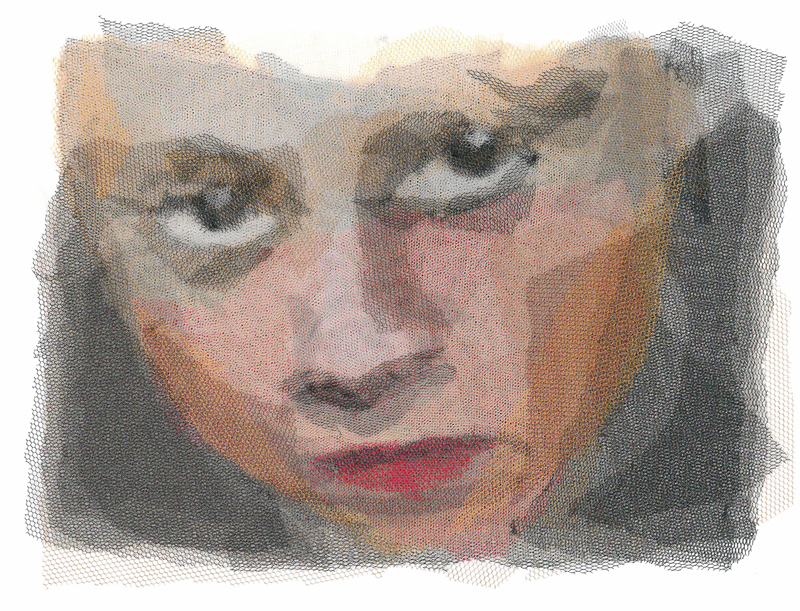
This 6th European Quilt Triennial, taking place from 13 September to the 1st of January 2016 at the Heidelberg Textile Museum Max berk, shows works from 45 artists from 10 European countries. Entries were submitted by 136 artists from 21 countries, mostly from Germany (58), Switzerland (24), Great Britain (13) and France (8). The fact that the number of entries in previous years was much higher is a phenomenon afflicting almost all quilt and textile art events at the moment. The new interest in textile art on the part of the arts and the art public* has not yet made its mark here.
The jury was an international one and able to convene over several days, which is a luxury that cannot be offered by all event organizers. For me, one reason to be part of the jury is the desire to get to know this area of expertise even better and to see the direction in which this genre is developing. There is nowhere better to do this than at such an international gathering in a convivial atmosphere as in Heidelberg!
The topics shown at this triennial are mainly of a gentle and meditational nature, and almost never provocative or challenging. Quiet tones predominate. Criticism of issues such as the financial world, destruction of the environment, the power of the media, or the fast pace of life today, is presented in nice packaging. One such example is the work “Castles in the Air“ by the prize winner Susanne Klinke. What appears to be a fairytale-like image at first sight turns out to be criticism by the younger generation of their elders when viewed in closer detail. “Yesterdays´s News” by Jette Clover firstly appears to be simply pleasing and well done, and only reveals its criticism after a second glance.
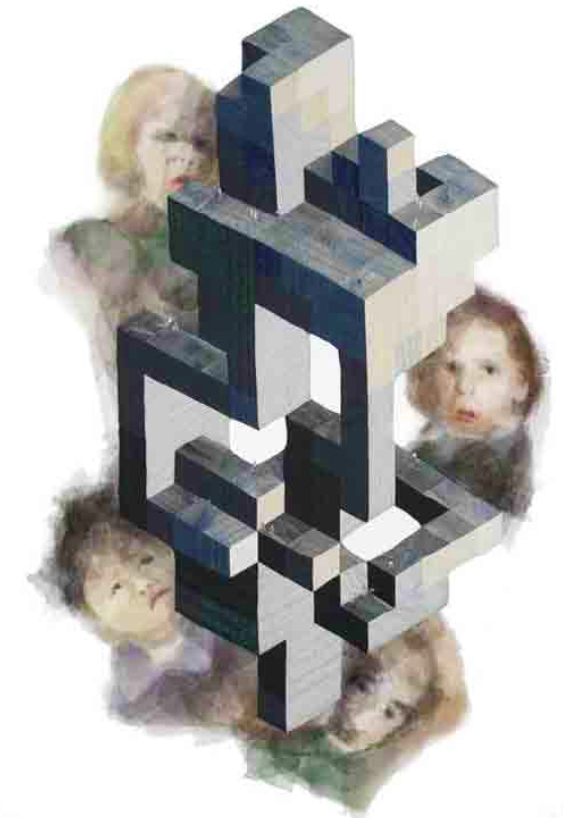

Historical subjects are covered in several works, whether this is the artist’s personal life or family or socially disadvantaged groups – in most cases females – which is hardly surprising considering that over 90% of quilt artists are female. In her work “Remembering the Magdalens”, Ann Fleeton from Ireland pays tribute to the women who were forced to work in laundries because of their alleged immoral behaviour. This quilt incorporates many old techniques that are particularly labour-intensive, giving even more significance to the work. Gabi Mett from Germany chose a similar topic for her work “Tell Me Your Stories”, using shopping bags for stencils for laundry markings.
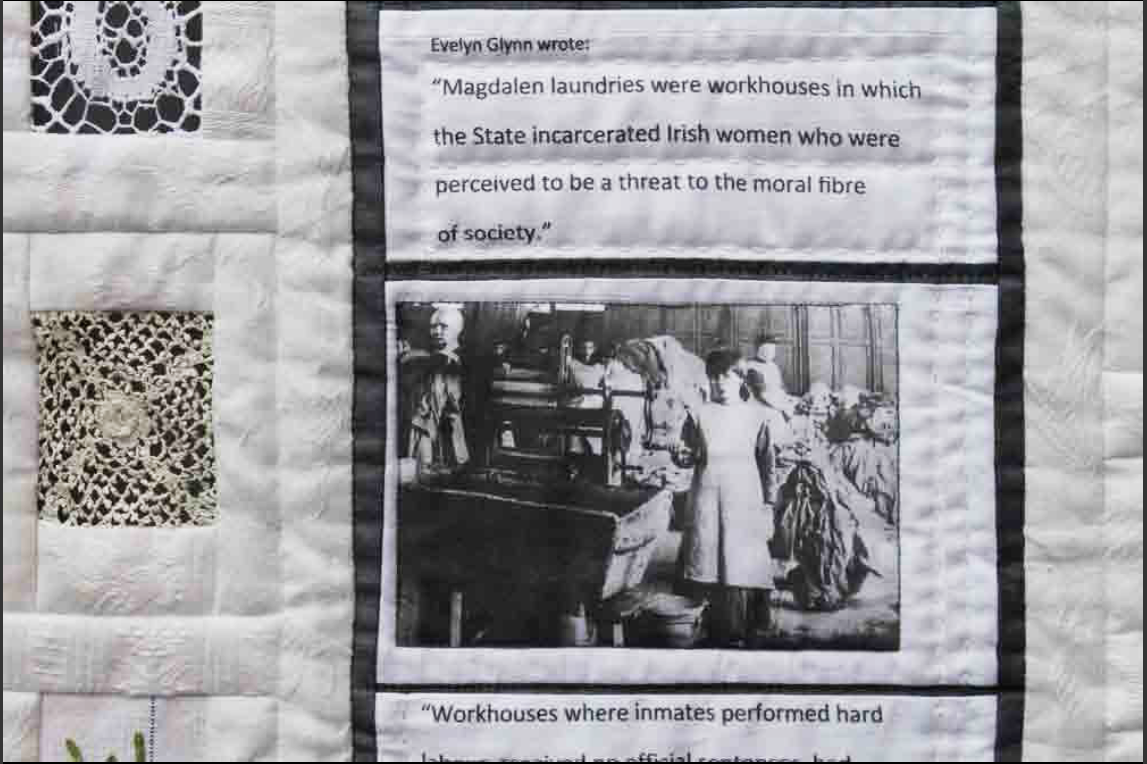
Works depicting flowers, plants, gardens and seasonal topics, which could fit the cliché of art typical for housewives, turn out to be a criticism of the environment, such as “High Water” by Cas Holmes, which depicts the vulnerability of our coasts, or can also be seen as an expression of pure joy in the creation of the work. I found the works “Mellow Yellow” by Elisabeth Brimelow and “High Summer” by Janet Twinn to be absolutely perfect and unpretentious. Why doesn’t the textile industry use such wonderful creations, and why has quilt art remained an almost unknown refuge?
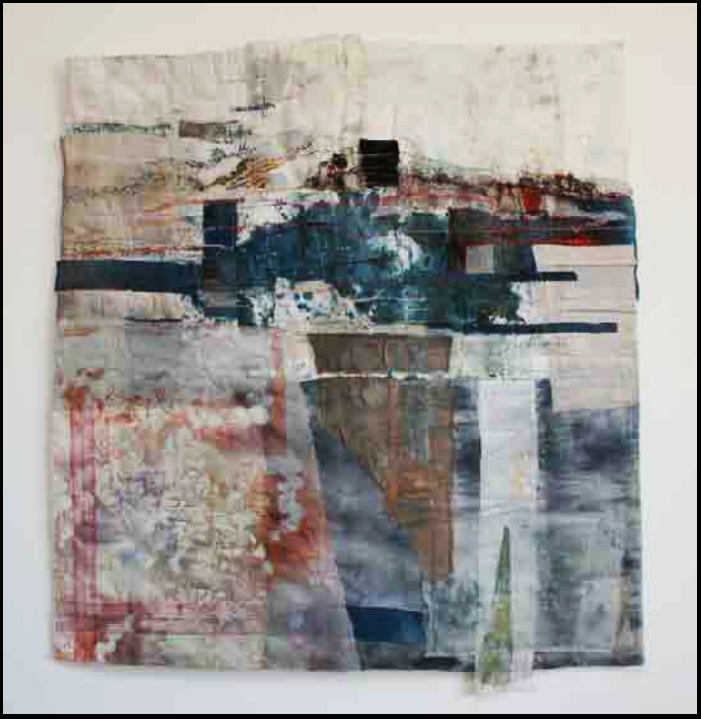
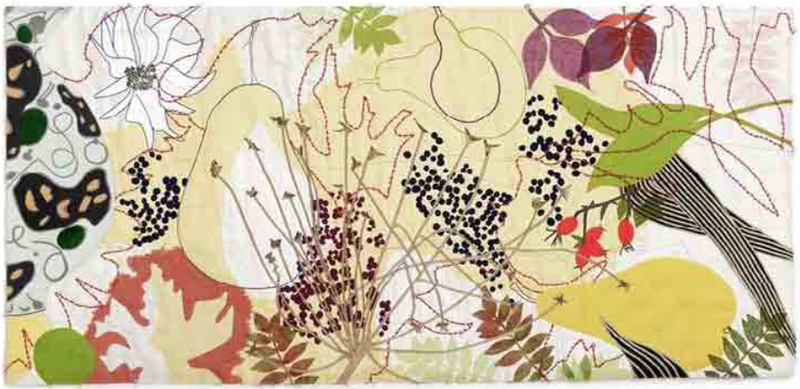
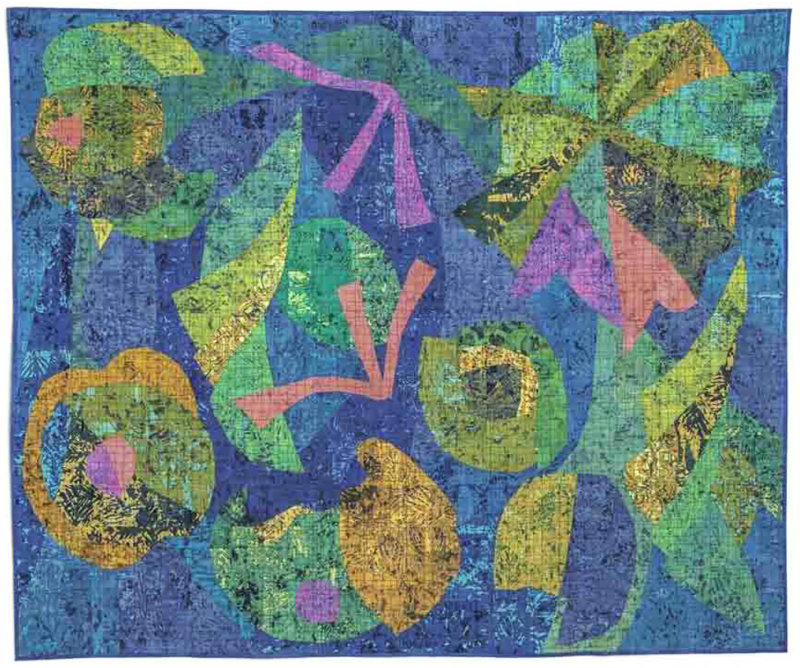
In several works, art has been used as the inspiration, as in “All Is Color” by Solange Lasbleis from France or in the quilt “Yellow Signs” by Ramona Conconi from Switzerland, which is very similar to the original painting by Paul Klee. In “Catwalk”, Gabriele Schneider from Germany used a cartoon drawing as the basis for her loud and cheeky work. Another out of the ordinary work is the graffiti-inspired “Note to Self” by Helen Conway from Great Britain.
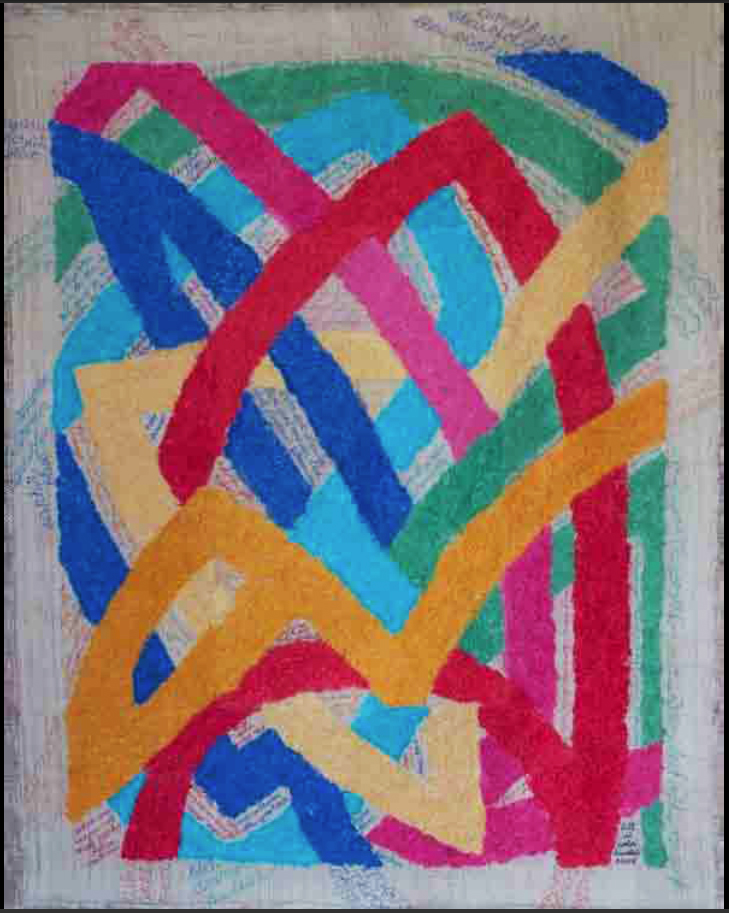
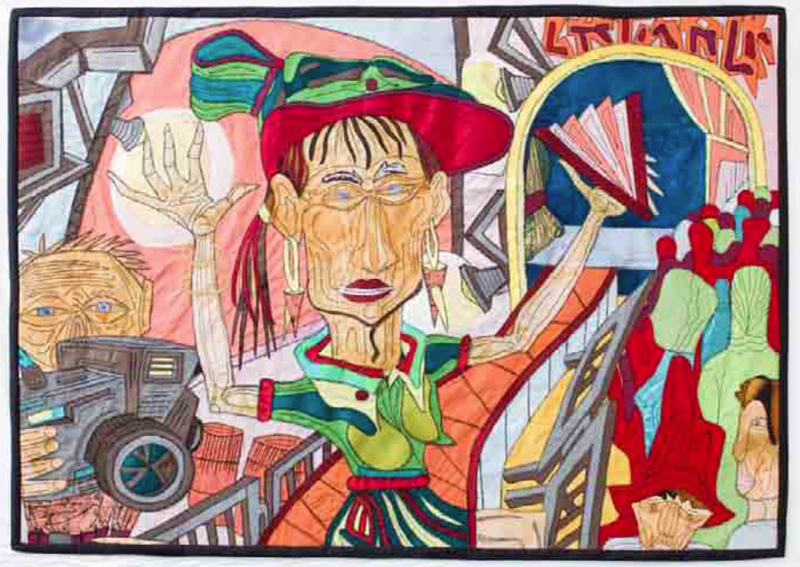
Playing with lines, surfaces and colours naturally occurs frequently in quilt art, and this exhibition is no exception. Some fine examples are “Pluie Coloré” (Coloured Rain) by Edith Raymond from France, “Reflets de la lune sur l´ocean” (Moon Reflecting in the Sea) by Gabrielle Paquin, also from France, and “Seascape” by Inge Hueber from Germany.

One artist used quilt art and its standing as the theme: “Marginal Activity” by Marita Lappalainen from Finland. Her wall hanging is empty in the middle, and the art work is restricted to the edges. “Is contemporary art a marginal activity?” and “How is contemporary quilt art appreciated in the public eye?” are questions posed by the artist.
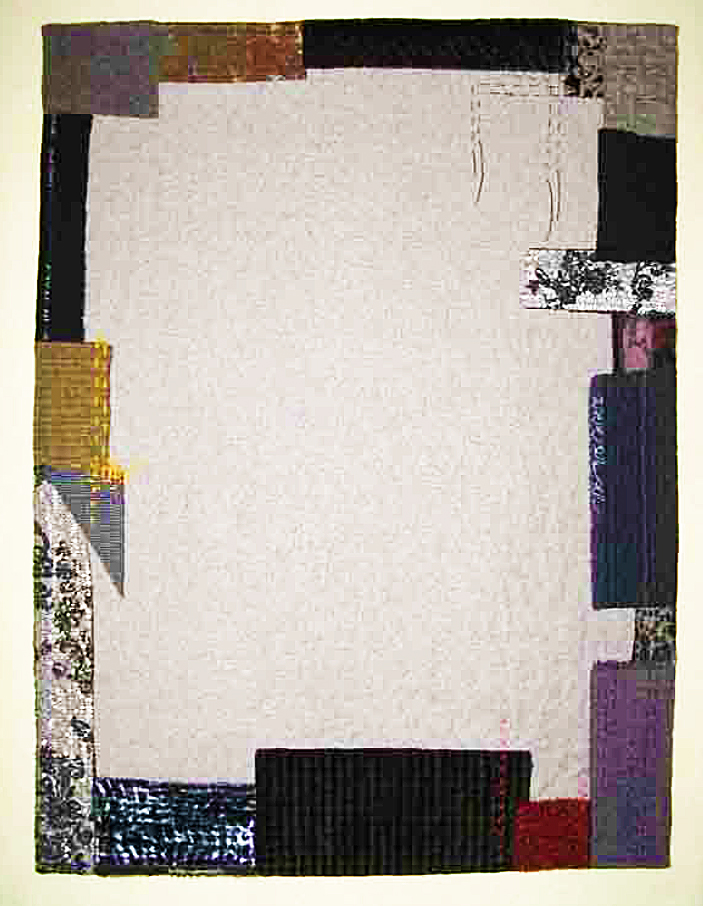
Some of the techniques used are exceptionally refined and impressive, as in “Structure and Space” by Urte Hanke, who won the prize for innovation in a large format: “I experiment with complex structures and their relationship with space” she said about her wonderfully painted and quilted work. The above-mentioned work “Castles in the Air” by the prize winner Susanne Klinke also stood out for the perfect techniques used. I know her work as an embroidery artist, and I am thrilled to see the innovative faces created by layering coloured tulle fabric.
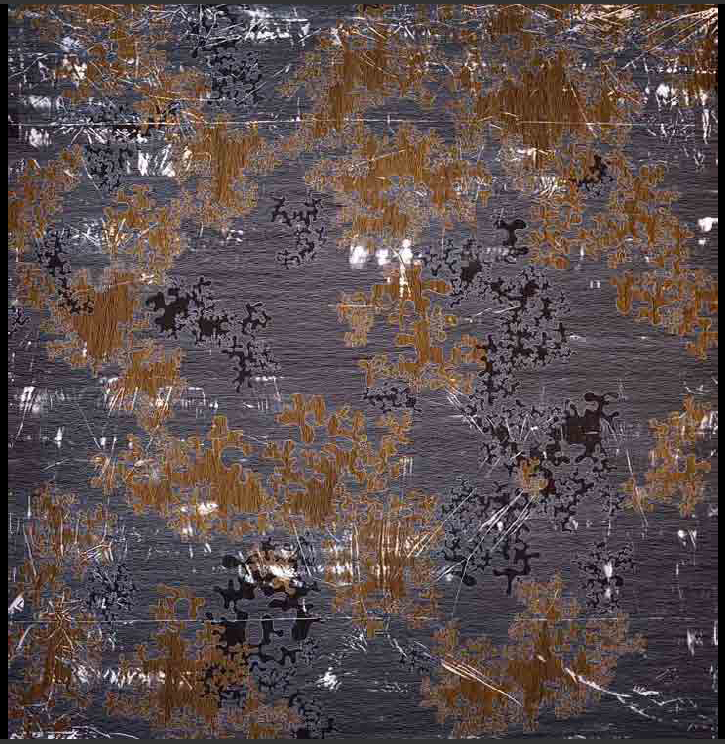
In modern art it is often said that technique is unimportant, but this does not hold for quilt art. Here the techniques used greatly influence how the work is appreciated. This is the case with “Goodbye in Small Stitches” by Rosa Dames, which seems to have been created effortlessly and airily, but demonstrates perfect mastery of the quilt as a medium. It looks wonderful even when viewed from a distance, and when viewed close up it reveals technical intricacies that make this quilt something really quite special.
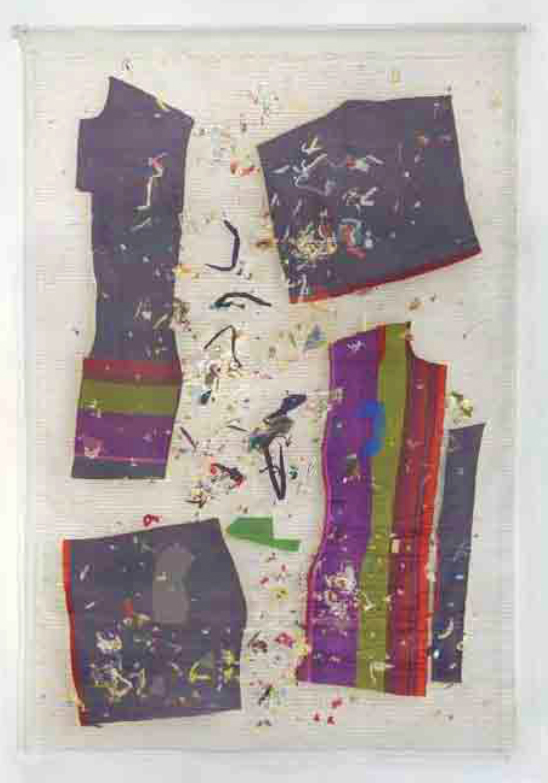
We may wonder what the future of quilt art is going to be, but this 6th triennial has proved once again how inexhaustible this medium is. Do we just have to accept that the number of events is on the increase while the number of applicants is decreasing, without having attained a deserved public appreciation in Europe? Not forgetting that most of the participants are getting on in years, which is one of the reasons why there is a special prize in Heidelberg for young artists, which was awarded this time to Theresa Russow from Germany for her work “Shadow of Flowers”.
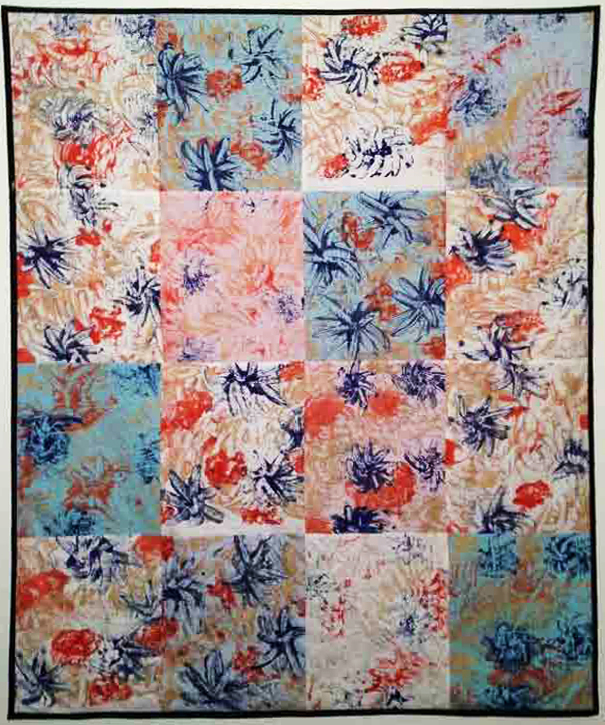
Since 1984, the Heidelberg biennials and triennials have given around 1500 patchwork / quilt artists the opportunity to compete with one another and allowed those artists selected to present their works to the general public. This is the merit of the initiator Doris Winter and her family, and of the current curator Dr. Kristine Scherer. But can we continue in the same way and keep on demanding two to three layers of material in invitations to submit, knowing that artists have already developed further? The Heidelberg quilt triennial already promotes such innovations and crossing of boundaries, and is regarded as being extremely open-minded (the prerequisite for participation here is two layers of material). This exhibition includes a three-dimensional object that bears little resemblance to a quilt: “Crossing Borders: Africa” by Anco Brouwers- Branderhorst from the Netherlands, or works with a special format like the work “Souvenir de ma jeunesse” by Els van Baarle from the Netherlands, which is reminiscent of a long embroidery sampler. Really, we need to define the criteria even more freely, because many artists – especially the younger ones – no longer create their artwork in the category of quilts. It might be time to think about a new name (such as the Doris Winter Triennial for Textile Art).
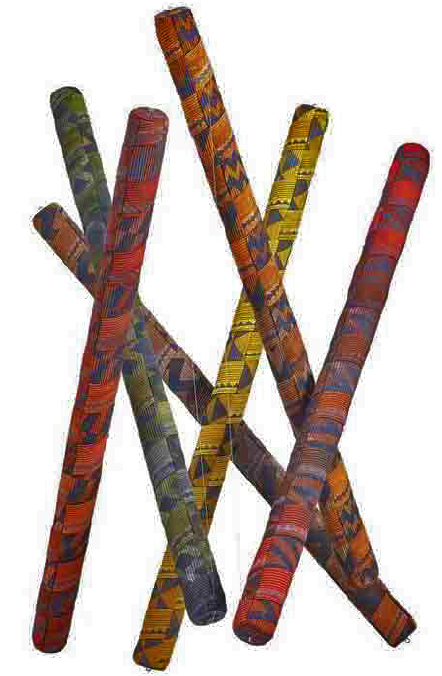
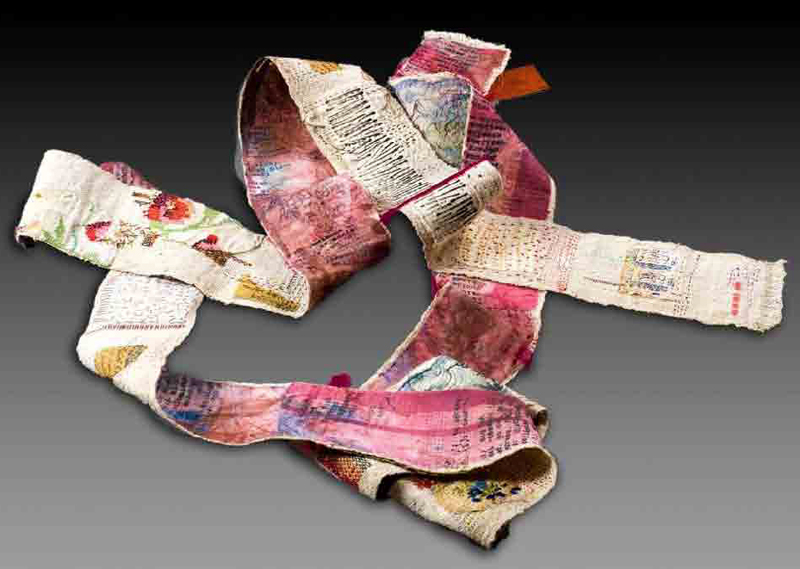
The new interest in textile art on the part of the arts and art public that was mentioned at the beginning refers mainly to textile artists who are long dead (like the tapestry weaver Hannah Ryggen, who was shown at the last Documenta in Kassel) or to artists close to “fine art” (such as Rosemarie Trockel). Louise de Bourgeois’ fabric collages are marvelled in international exhibitions and shown in books. These are works that might not even have been noticed at the quilt triennial. Why does the public take note of such works, and why is quilt art – at least in Europe – an unknown genre? In the USA, some quilt artists have succeeded in being shown in art galleries and have attained good prices for their work.
There is a similar lack of public appreciation in other textile areas such as tapestry weaving, Jacquard weaving, shaft weaving, embroidery, lace art and felt art. This imbalance between public interest in art using textiles and the reality experienced by textile artists is quite extreme in Europe. For this reason, the Italian textile artists held a large retrospective textile exhibition in an important museum in Rome to make a stand against the biennial in Venice where textiles are shown constantly but almost never by textile artists.
The textile artists in Europe need to attract attention! It is clear that each textile area is too small on its own and has too few resources to organize an international touring exhibition. But I think that all of these groups together should risk cooperating with one another to make textile art in all of its flavours known to the public eye and increase general appreciation. This should not be instead of the own area’s event, but rather as an additional, jointly hosted and prominent open competition. The result should then go on tour to the best museums in Europe. The first step would be a meeting of several important event organizers to discuss the joint future. Otherwise, there is a risk of missing out on the emerging new interest in textile art just because everyone is staying in their own corner.
In Europe we already have a triennial that has gained worldwide attention – the tapestry triennial in Lodz/Poland, which – contrary to what the name implies – covers the entire spectrum of textile art. However, so far, this event has not given artists any opportunity to apply because advisers select and propose the candidates. It is conceivable that this event could be restructured as a generational change is currently taking place in Lodz.
Conclusion: There needs to be a concerted course of action by some progressive event organizers to bundle the forces of textile art in Europe and to bring them out of the shadows. It seems to me that the Textile Museum Max Berk in Heidelberg, an important institution that is highly regarded by everyone, is open to such a bundling of forces in Europe and is willing to help bring about a new appreciation of quilt and textile art.
Beatrijs Sterk
Hannover, 18 July 2015
Note: The opening will be held on 13 September in the morning
(*) See the articles “Exhibitions with the medium of textile and the fine art scene” and “When was the starting point of textiles in fine art?” in the Textile Forum blog at https://www.textile-forum-blog.org/2013/12/deutsch-ausstellungen-mit-textil-im-dunstkreis-der-kunstszene/and https://www.textile-forum-blog.org/2014/05/when-was-the-starting-point-of-textiles-in-fine-art-2/